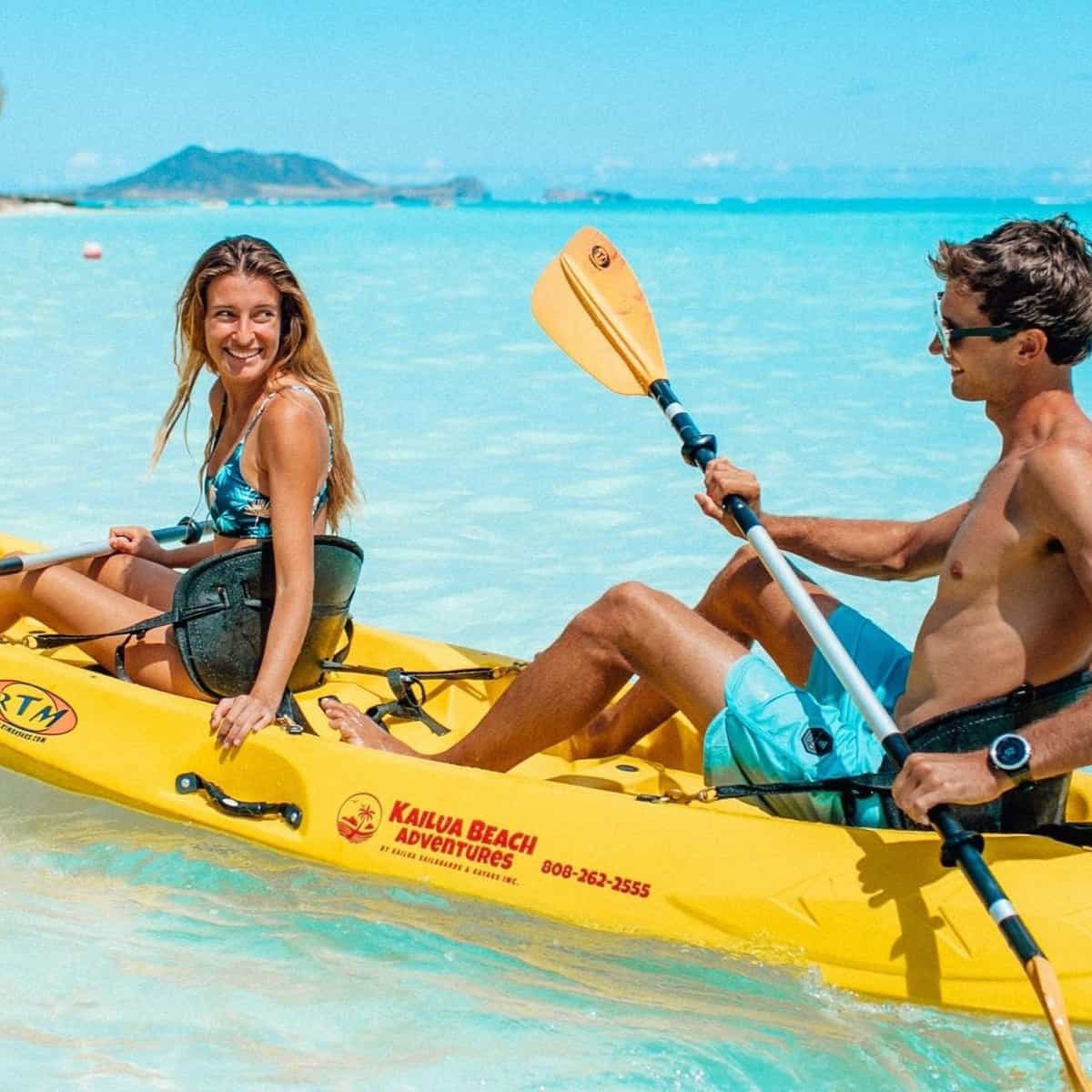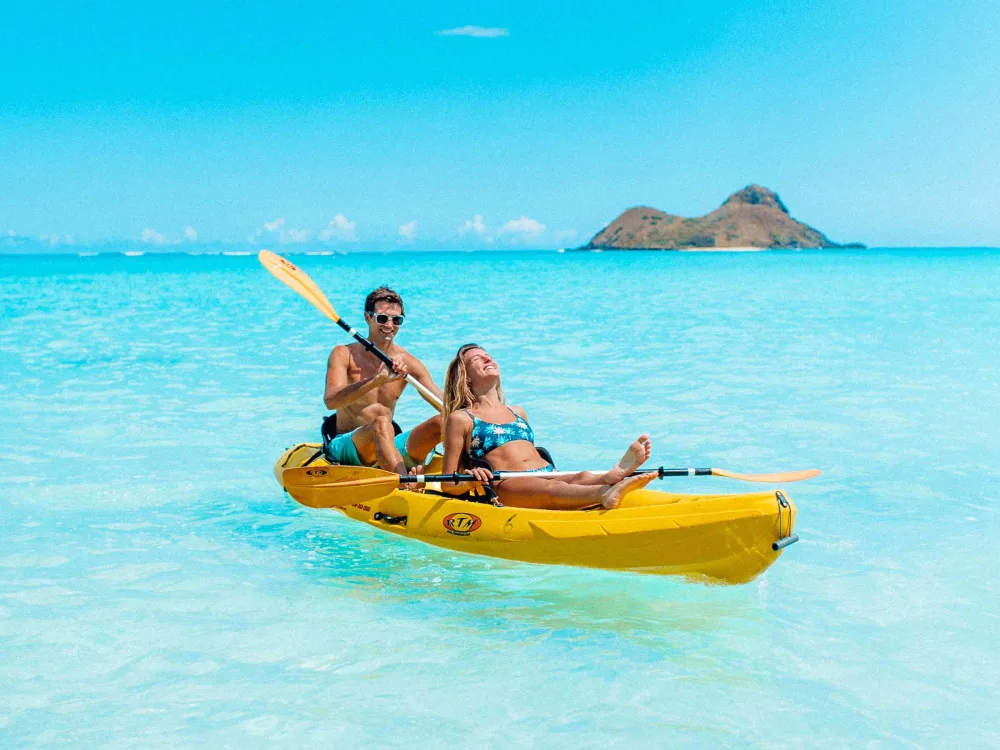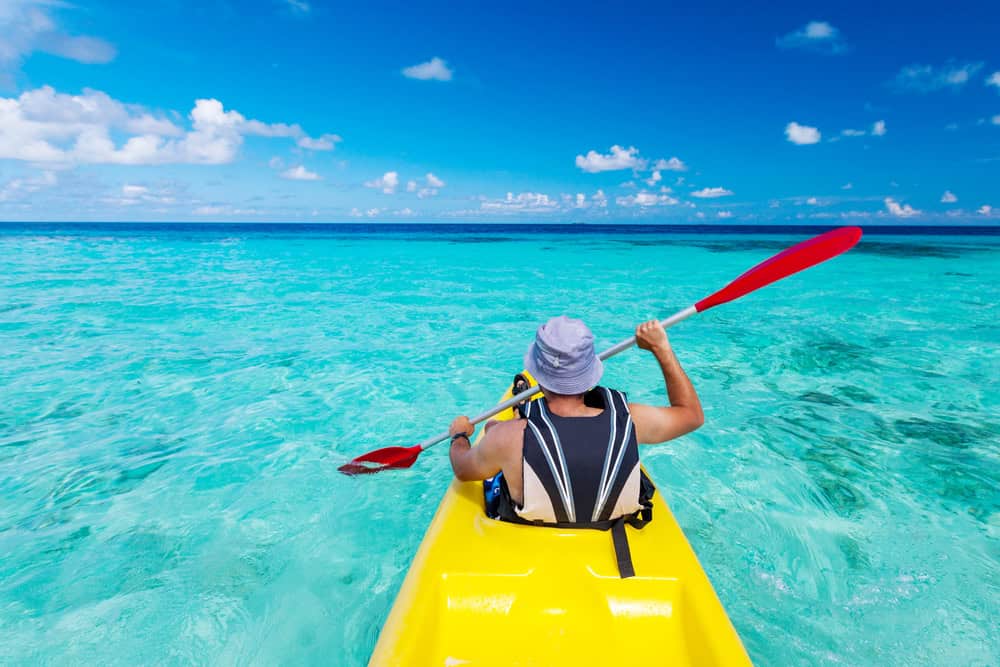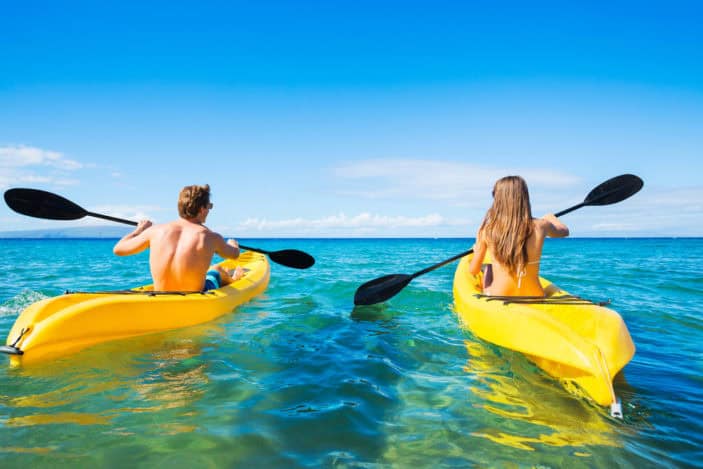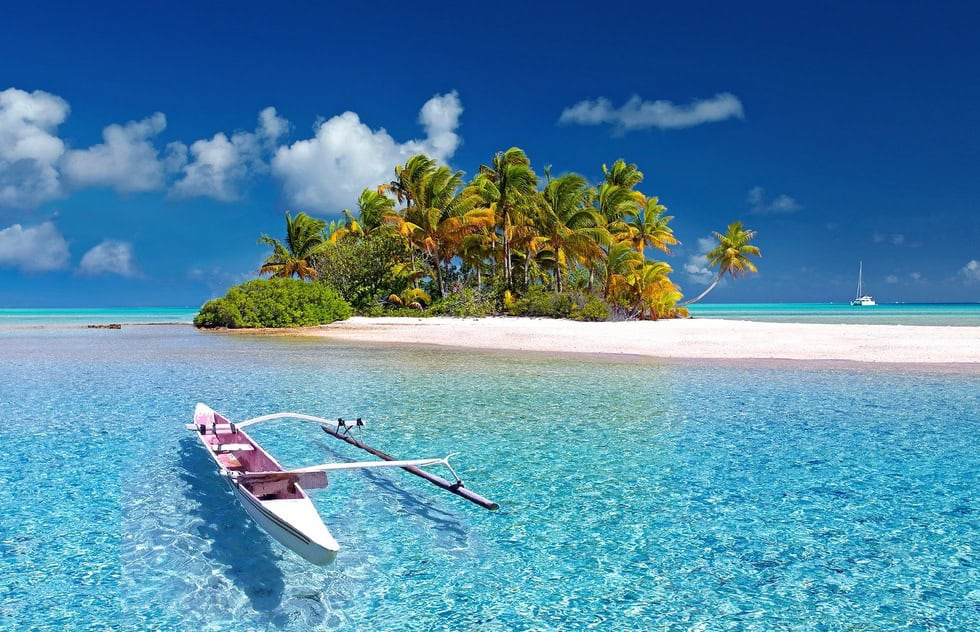Beach kayaking is a thrilling water sport that involves paddling a kayak along the shoreline of a beach. It offers a unique and exciting way to explore coastal areas, enjoy the beauty of nature, and get some exercise at the same time. As an avid beach kayaker myself, I can attest to the many benefits this activity has to offer.
One of the main advantages of beach kayaking is its accessibility. Unlike other water sports that require specialized skills or expensive equipment, beach kayaking can be enjoyed by people of all ages and fitness levels. Whether you’re a beginner or an experienced paddler, there’s always something new to discover and learn in this dynamic sport.
Key Takeaways
- Choose the right kayak for beach kayaking based on your skill level and the type of water you’ll be paddling in.
- Essential gear for beach kayaking includes a life jacket, paddle, and appropriate clothing for the weather conditions.
- Safety tips for beach kayaking include checking weather and tide conditions, staying close to shore, and avoiding alcohol consumption.
- Basic paddling techniques for beach kayaking include proper grip and posture, using your core muscles, and maintaining a steady rhythm.
- Advanced paddling techniques for beach kayaking include bracing, edging, and using different strokes to navigate waves and currents.
Choosing the Right Kayak for Beach Kayaking
When it comes to choosing a kayak for beach kayaking, there are several factors to consider. The type of kayak you choose will depend on your skill level, intended use, and personal preferences.
There are two main types of kayaks suitable for beach kayaking: sit-on-top (SOT) kayaks and sit-inside (SI) kayaks. SOT kayaks are more stable and easier to get in and out of, making them ideal for beginners or those who prefer a more relaxed paddling experience. On the other hand, SI kayaks provide better protection from wind and waves, making them suitable for more advanced paddlers or those who plan on venturing into rougher waters.
Other factors to consider when choosing a kayak include its length, width, weight capacity, storage options, and maneuverability. It’s important to test out different models before making your final decision to ensure that you find one that suits your needs perfectly.
Essential Gear for Beach Kayaking
In addition to choosing the right kayak, there are several essential pieces of gear that every beach kayaker should have:
1) Personal flotation devices (PFDs): A PFD is a must-have safety item for any water activity. It helps to keep you afloat in case of an accident or capsize. Make sure to choose a PFD that fits properly and is approved by the appropriate authorities.
2) Paddles: The type of paddle you choose will depend on your height, paddling style, and personal preference. It’s important to select a paddle that is lightweight, durable, and comfortable to hold.
3) Safety equipment: Other safety equipment that should be carried include a whistle or signaling device, a bilge pump or sponge for removing water from the kayak, and a towline in case you need assistance.
4) Clothing and footwear: Dress appropriately for the weather conditions and wear clothing that can get wet without causing discomfort. Additionally, it’s important to wear protective footwear such as water shoes or sandals with good grip to prevent slipping on wet surfaces.
Safety Tips for Beach Kayaking
| Safety Tips for Beach Kayaking |
|---|
| Always wear a life jacket |
| Check weather and tide conditions before heading out |
| Stay within designated swimming areas |
| Keep a safe distance from other watercrafts and swimmers |
| Bring a whistle or other signaling device |
| Stay hydrated and protect yourself from the sun |
| Learn basic kayaking techniques and safety procedures |
| Never kayak alone |
| Be aware of marine life and avoid disturbing their habitats |
| Know how to re-enter your kayak in case of capsizing |
While beach kayaking can be an exhilarating experience, it’s important to prioritize safety at all times. Here are some essential safety tips every beach kayaker should follow:
1) Checking weather and tide conditions: Before heading out on your kayaking adventure, always check the weather forecast and tide charts for your chosen location. Avoid going out in strong winds or rough seas as these conditions can make paddling difficult and dangerous.
2) Staying within your skill level: It’s crucial to know your limits as a paddler and stay within your skill level when venturing out onto the water. Don’t attempt challenging routes or conditions until you have gained enough experience and confidence.
3) Knowing how to self-rescue: Accidents happen even to experienced kayakers, so it’s essential to know how to self-rescue in case of capsizing or falling off your kayak. Practice techniques such as re-entry rolls or assisted rescues with another paddler before attempting them in real-life situations.
4) Communicating with others: Always let someone know your paddling plans, including your intended route and estimated time of return. Carry a waterproof communication device such as a VHF radio or a cell phone in case of emergencies.
Basic Paddling Techniques for Beach Kayaking
To fully enjoy beach kayaking, it’s important to learn and master the basic paddling techniques. Here are some essential techniques to get you started:
1) Proper grip and posture: Hold the paddle with both hands, keeping them shoulder-width apart. Sit up straight with your feet resting comfortably on the footrests or foot pegs.
2) Forward stroke: The forward stroke is the most basic and fundamental paddling technique. To perform it correctly, reach forward with one hand while rotating your torso slightly towards that side. Insert the blade into the water near your feet and pull it back towards your hip, using a smooth and fluid motion.
3) Reverse stroke: The reverse stroke is used to slow down or stop your kayak. It is performed by reversing the motion of the forward stroke – start at your hip and push the blade forward until it reaches near your feet.
4) Turning: There are several ways to turn a kayak, but one common technique is called sweep strokes. To turn left, for example, extend both arms out to one side while keeping one arm closer to you than the other. Rotate your torso towards that side while sweeping both blades away from you in an arc-like motion.
Advanced Paddling Techniques for Beach Kayaking
Once you have mastered the basic paddling techniques, you can move on to more advanced maneuvers that will enhance your beach kayaking skills:
1) Bracing: Bracing involves using quick strokes or braces with either paddle blade to maintain balance when encountering waves or rough water conditions.
2) Sculling: Sculling is a technique used for maneuvering in tight spaces or turning your kayak while stationary. It involves using a side-to-side motion with the paddle blade to generate propulsion.
3) Draw stroke: The draw stroke is used to move your kayak sideways. To perform it, reach out with one hand and place the paddle blade perpendicular to the side of your kayak. Pull the blade towards you while keeping it close to the hull, causing your kayak to move in that direction.
4) Sweep stroke: The sweep stroke is an advanced turning technique that allows you to make sharp turns quickly. It involves sweeping both blades away from you in a wide arc-like motion while rotating your torso towards the direction you want to turn.
Navigating Waves and Currents in Beach Kayaking
Navigating waves and currents can be challenging but also exciting for beach kayakers. Understanding wave patterns and using currents to your advantage can greatly enhance your paddling experience:
1) Understanding wave patterns: Waves can be unpredictable, so it’s important to learn how they form and behave in different conditions. Observe how waves break onshore or offshore, as this will affect how you approach them.
2) Using currents to your advantage: Currents can either help or hinder your progress when beach kayaking. Learn about tidal flows and use them strategically by paddling with or against them depending on where you want to go.
3) Techniques for paddling through waves: When encountering waves head-on, it’s important not to panic but instead maintain a steady pace and keep a balanced posture. Use powerful forward strokes combined with bracing techniques when necessary.
Beach Kayaking Etiquette and Rules
To ensure a safe and enjoyable experience for everyone, it’s important for beach kayakers to follow certain etiquette guidelines:
1) Sharing the water with other watercraft: Be aware of other water users such as swimmers, surfers, or boaters, and give them plenty of space. Yield to larger vessels and avoid paddling in crowded areas.
2) Respecting wildlife and the environment: Be mindful of the natural environment and wildlife around you. Avoid disturbing nesting birds or marine animals, and do not leave any trash or litter behind.
3) Following local regulations: Familiarize yourself with any local rules or regulations regarding beach kayaking in your area. Some beaches may have specific launch points, restricted areas, or time limits for water activities.
Planning Your Beach Kayaking Trip
Proper planning is essential for a successful beach kayaking trip. Here are some tips to help you plan your adventure:
1) Choosing a location: Research different beaches or coastal areas that are suitable for beach kayaking. Consider factors such as accessibility, parking facilities, launch points, and the presence of amenities like restrooms or picnic areas.
2) Packing essentials: Make a checklist of all the gear and equipment you’ll need for your trip, including your kayak, PFDs, paddles, safety equipment, clothing, food/snacks, water bottles/containers sunscreen etc.
3) Creating an itinerary: Plan out your route in advance by studying maps or using GPS navigation tools. Take into account factors such as distance covered per day based on your fitness level and available daylight hours.
Beach Kayaking for Fitness and Health
Beach kayaking offers numerous physical and mental health benefits that make it an ideal activity for those looking to improve their overall well-being:
1) Benefits of kayaking for physical health: Kayaking is a low-impact exercise that provides a full-body workout. It helps to strengthen muscles in the arms, shoulders, back core & legs while improving cardiovascular fitness & endurance levels.
2) Benefits of kayaking for mental health: Being out on the water can have a calming effect on the mind & reduce stress levels significantly . The rhythmic motion of paddling combined with the beauty of nature can promote relaxation & improve mental clarity.
3) Incorporating kayaking into your fitness routine: Consider adding beach kayaking to your regular fitness routine. Aim for at least 30 minutes of paddling per session, gradually increasing the duration and intensity as you build strength and endurance.
Taking Your Beach Kayaking Skills to the Next Level
If you’re looking to take your beach kayaking skills to the next level, there are several ways to challenge yourself and expand your horizons:
1) Joining a kayaking club or group: Joining a local kayaking club or group is a great way to meet like-minded individuals, learn from experienced paddlers, and participate in organized trips or events.
2) Participating in races or competitions: If you’re feeling competitive, consider entering kayak races or competitions. These events provide an opportunity to test your skills against other paddlers and push yourself beyond your comfort zone.
3) Learning new skills and techniques: Never stop learning! Take advantage of workshops, courses, or online tutorials that focus on specific aspects of beach kayaking such as advanced strokes, rescue techniques, navigation skills etc.
With the right equipment, knowledge, and skills ,beach kayaking can be a fun & rewarding activity for people of all ages & skill levels. By following these tips & tricks ,you can become a pro at beach kayaking & enjoy all the benefits it has to offer . So grab your paddle ,put on that PFD,& embark on an unforgettable adventure along the beautiful coastlines!
FAQs
What is beach kayaking?
Beach kayaking is a type of kayaking that involves paddling in the ocean or other bodies of water near the shore. It can be done for recreation or as a competitive sport.
What are some tips for beginners in beach kayaking?
Some tips for beginners in beach kayaking include starting with a stable kayak, practicing basic paddling techniques, wearing appropriate safety gear, and staying aware of weather and water conditions.
What are some advanced techniques for beach kayaking?
Some advanced techniques for beach kayaking include mastering different types of strokes, learning how to navigate waves and currents, and practicing advanced rescue techniques.
What kind of equipment is needed for beach kayaking?
The equipment needed for beach kayaking includes a kayak, paddle, personal flotation device, and appropriate clothing and footwear. Optional equipment may include a spray skirt, helmet, and other safety gear.
What are some safety considerations for beach kayaking?
Some safety considerations for beach kayaking include wearing appropriate safety gear, staying aware of weather and water conditions, avoiding strong currents and waves, and practicing rescue techniques.
What are some popular destinations for beach kayaking?
Some popular destinations for beach kayaking include coastal areas with calm waters, such as bays, lagoons, and estuaries. Popular locations include the Florida Keys, Hawaii, and the Pacific Northwest.

